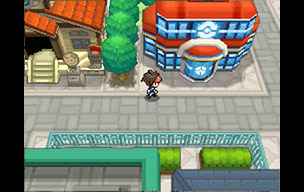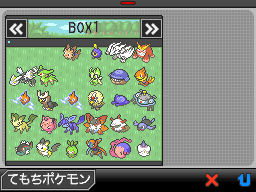
Do they see Black and White 2 as being substantially different to their predecessors? "It's a bit different," James muses. What I'm most interested in is how concerned with innovation these young devotees are. "You know how I said the other day about how it was nice to be new to the story?" Dillon asks. James, on the other hand, is more of an explorer and completist, preferring the challenge of catching Pokémon and filling the Pokédex. For Dillon, it's all about the precision focus - selecting, training and evolving the perfect team.

Amongst the detailed technical chatter, it becomes clear that they also represent very different types of Pokémon player. They've never met before, but within a few minutes they're chatting away like they've known each other for years. Comparing Pokédexes, discussing starters, offering tactics. Of course, as soon as the boys meet, DSes flip open and it's straight into the shop talk. The events of Black and White 2 take place two years after the previous game, and lots of rivals return in different circumstances. Young and old, fans and critics: after a week spent playing the English-language version of the game separately, we all convened for a State of the Pokénation summit. If anyone can help us ascertain the relative worth of this hurried follow-up, it's them. Both of them live and breathe Pokémon, both have completed the original Black and White games multiple times and both have been pestering for the European release of the sequels since they were announced back in February. We're opening up the review process to some real Pokémon experts: my son Dillon, 10, and Chris Schilling's son James, 6. So for Pokémon Black and White 2, the first direct sequel in the series' long history, we're doing something different.

There's a very real danger that what you'll end up with is little more than a Wikipedia summary with a score at the end. Everyone who has ever played a Pokémon game - whether in 1996 or 2012 - knows exactly how the game will play.

The result is that reviewing the latest addition to the family tree can easily become a box-ticking exercise. Improvements are incremental, new features tentatively introduced every generation but rarely mutating too far from the dependable DNA structure that has allowed the games to survive - and thrive - for over 15 years. Unlike the rapid genetic improvements enjoyed by the colourful creature sprites contained within, the series itself has evolved at a more Darwinian pace. It's always a challenge reviewing the latest Pokémon game.


 0 kommentar(er)
0 kommentar(er)
